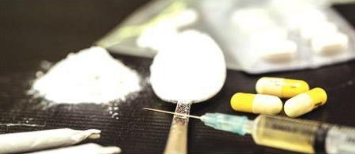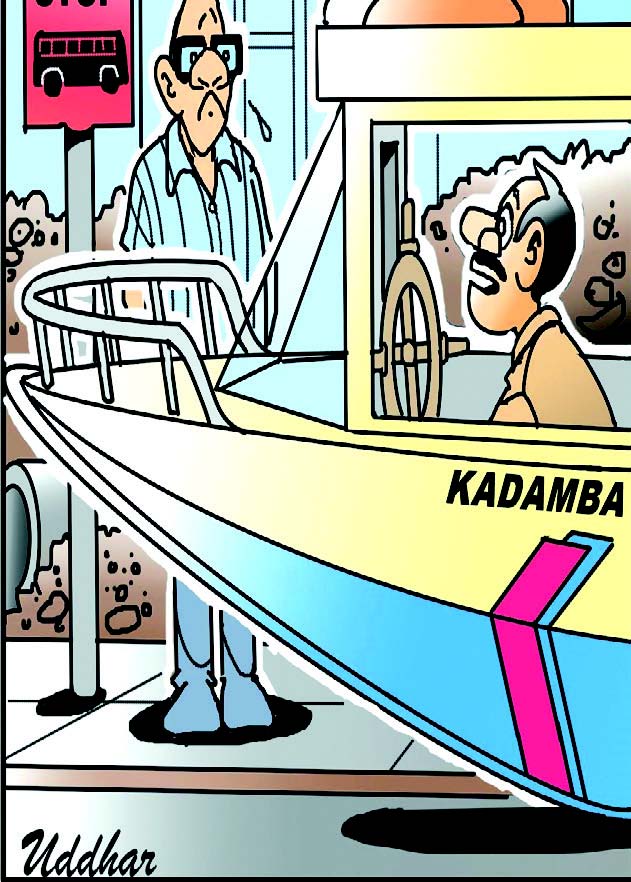
Sujay Gupta
Denial as a defence mechanism has been time tested and used by men, civilizations and governments. Societies too use denial to push back or push away either existential or obvious realities when empirical evidence points otherwise.
A similar sort of a process is in motion in Goa’s attitude towards dealing with the deep penetration of what is loosely called the “drug menace”. The menace needs to be broken up into important fragments and each of these fragments needs independent attention.
The arrest of Chris Costa from Camurlim (Ambora) in Salcette by the Narcotics Control Bureau in investigations that have sprung from the death of actor Sushant Singh Rajput, has pitchforked the interiors of Goa, away from the beaches and tourist spots, into the radar of a drug probe with international links. And to top it all, the man arrested, reportedly started off as a small-time peddler and was, according to the police, absconding, after two young boys died of what was almost surely, due to drug overdose at a birthday party which went horribly wrong.
This was in 2015. Drugs had moved from the so-called zone of hedonism into the supposed zone of purity and simplicity, the interiors of Goa’s traditional villages, relatively untainted with the outside touch. The cruel irony is that Goa’s interiors were and are getting tainted by the inside touch. Chris is a local boy. His family is known in Ambora and Loutolim. Old-timers have seen him as a child. And many know that after the Curtorim drug-related death cases, he was absconding.
Yet there was and is a layer of denial and unacceptability about the fact that virtually all the little brush strokes on the canvas that go on to paint the so-called “drug menace” are visible in the interiors of South and North Goa, in idyllic villages on river banks and edges of forests.
Let’s pause a moment to study the phenomenon of being in denial. It’s a proper state of existence. Professor George Simon in his seminal essay “Obstructive power of denial’ writes, “One kind of denial is an unconscious defence mechanism. It’s our mind’s way of protecting us against unbearable emotional pain. The other kind of denial is a deliberate and therefore conscious tactical manoeuvre to evade responsibility and manipulate others.”
For Lotlikars or Curtorkars, the denial of drugs in their villages could be a defence mechanism. But when Chief Minister Pramod Sawant says that there are no drugs in the whole of Goa then one can’t help but feel that this is the second variety of denial that Professor Simon talks of- deliberate, conscious and therefore tactical.
Recently, in response to a question from Leader of Opposition Digambar Kamat, in the Assembly, Dr Pramod Sawant said, “There is no information on the existence of drug mafia in Goa. However, Goa being a tourist destination, narcotic drugs could be smuggled in Goa for trade, consumption and transit. The drug dealers/suspects involved in narcotic activities operate in a clandestine and well-organized manner,”
But then in another reply to another question the basis of the Chief Minister’s earlier claim that there is no drug mafia in Goa gets undermined with this written reply to Congress MLA Aleixo Reginaldo Lourenco “In 2018-19, 441 cases related to narcotics offences were registered in various police stations across Goa, which fairly amounts to one drug-related offence every two days”.
Now we do not quite know what the Chief Minister’s definition of a 'mafia’ is but if a general interpretation of the 'mafia’ being an organised crime syndicate, indulging in primary and secondary activities which included prostitution and drug-running is taken, then that ecosystem surely exists in Goa. And with 441 cases - which, by the way, amounts more than one drug-related offence per day, can this business be termed as anything else but organized?
But Dr Sawant is not the first Chief Minister who has played the denial card as far as drugs in Goa is concerned. In the run-up to the 2012 assembly and the 2014 Lok Sabha elections, Shripad Naik, now a union Minister promised a CBI probe into Goa politicians’ links to the drug mafia.
But in power, the BJP did not acknowledge the presence of organised drug gangs in Goa. “There are no organized gangs which specializes in the distribution of drugs in the state,” then Chief Minister Manohar Parrikar told the Goa Assembly.
In fact, drug-running is a well-oiled machine which not just runs the business but oil's the pockets of the powerful and the influential and keeps the seamless mechanics of getting protection from the system, absolutely smooth.
In the last month, a small-time actor Kapil Jhaveri got caught with drugs at a dope-filled rave in Arpora. He was shortly bailed out and is only an accused. This man has pictures of him with politicians cutting across all political hues - this business, generally speaking, is purely agnostic to party ideologies- and is on the board of a cooperative bank with several branches in Goa.
Another hotelier Gaurav Arya showed up in WhatsApp chats with Sushant Singh Rajput’s girlfriend Rhea Chakraborty and is suspected of being a part of the broad drug ecosystem.
These developments are neither surprising nor shocking. But what is less noticed in the overall narrative of drug syndicates, run by the rich and powerful from outside Goa, is the entire system of local peddlers, delivery boys, transporters etc. And not all of them are from the coastal belt and the party zone.
Over time the drugs have permeated into the interiors of Goa with Goans being both consumers as well as traders in this bazaar.
And while the case files will be littered with instances of shoddy investigations, peddlers and others let off the hook and cases closed, let us look at two examples of how senior politicians could have done much more and walked their talk and travelled on the last mile to practice what they preached. While this doesn’t point to complicity, the charge of carelessness in ensuring system cleansing can surely be levied.
Let’s look at the April 19/20 2015 suspected drug-related deaths in Curtorim, in which the same Chris Costa (also referred to as Chris Pereira) was absconding. After those deaths Curtorim MLA Aleixo Reginaldo Lourenco said he would launch a strong protest and a morcha if they failed to track down the culprits. He had said then “Without connivance of the authorities and police mechanism, the drug traders cannot succeed.” He also said that he would write open letters exposing the intricate hand-in-glove of the drug trade and demanded an “in-depth and total investigation in this case right till the uppermost trail of the drug trade” and called upon the police “to provide an action taken report soon”
He further said that a man named ‘Mathew’ is a link to a drug trader whose code name is ‘Lotus’.Though one Mathew Colaco surrendered after six days, we are none the wiser as to whom 'Lotus' is. Then about three years later the investigation and case was closed after the viscera reports of the deceased were clear of drugs.
Now we all know the little games that are normally played by delayed post mortems and viscera reports until cases fade from memory.
It will be pertinent for the very vocal Curtorim MLA who does take up cases, to enlighten us as to how he reacted when the case was simply closed and one absconder in this case was picked up by NCB in connection with arguably India’s most high-profile drug case, five years later
Then the present Calangute MLA Michael Lobo had once said, "The Nigerian and Russian mafia are going unchecked because police are scared of them. The Nigerians are very organized. If you go into Tito’s lane at night, there are Nigerians openly asking tourists if they want ‘coca’, which is the street name of cocaine”.
But Lobo, in spite of his claimed good intentions, has been the Deputy Speaker and currently a senior minister in the Sawant cabinet. It is important that well-intentioned MLAs either from ruling or opposition parties should close and eradicate this menace. Ministers, at the very least, do not have an excuse.
As we conclude this sordid tale, for now, let’s revert to one more of Chief Minister Sawant’s statements, “Bars and restaurants and shacks along the drug-prone belt are subjected to surprise checks. To create a strong deterrent impact against the drug activities, the drug-prone areas are kept under continuous surveillance.”
The Chief Minister would do well to fathom that phrases like ‘drug prone' are just convenient clichés. Drugs have permeated to every pore of Goa, from Sankhli to Salcete and to the east, west, north and south of these places. Panchayats like Loutolim and others have passed Gram Sabha resolutions demanding a crackdown on drugs in their interior villages. A drug dealer from Camurlim gets picked up. So what are the drug prone areas according to our Chief Minister?
An ecosystem of trust and belief can only be created if we stop living in denial and accept reality checks. And a system that knows that drugs in Goa is not an isolated worry wart but full-fledged cancer.
Sujay Gupta is the Consulting Editor Herald Publications and tweets @sujaygupta0832
